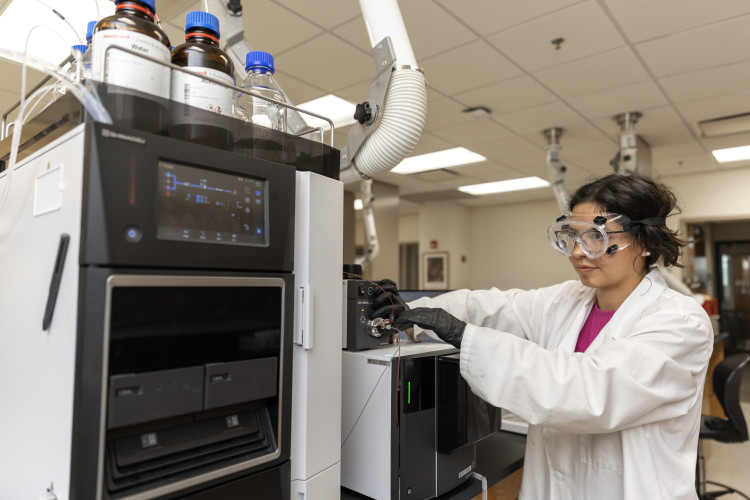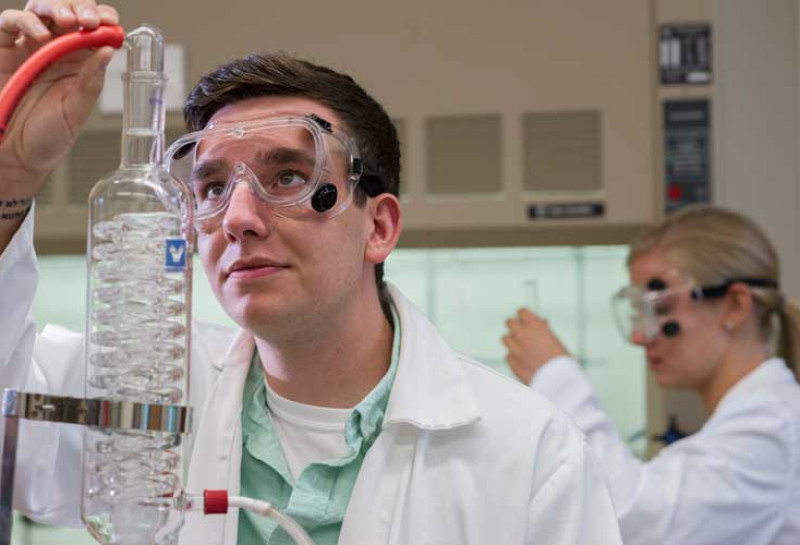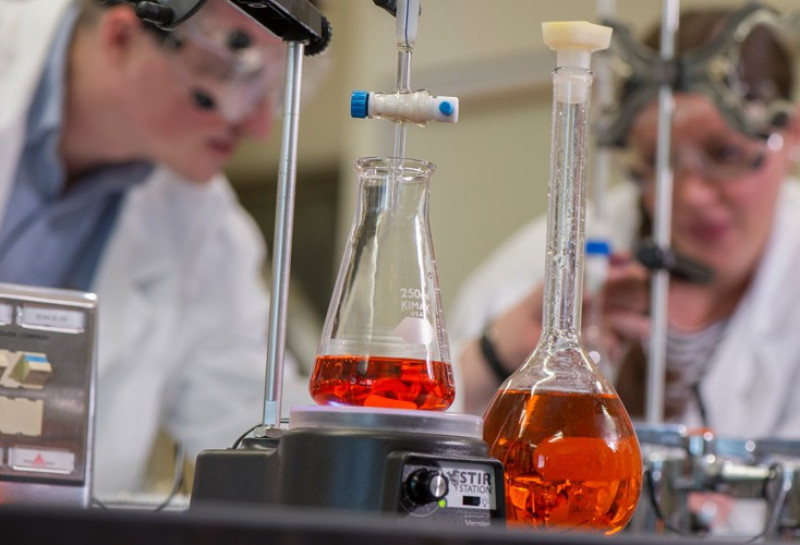Explore the Instruments You’ll Use:
- Shimadzu LCMS-2050 (Liquid Chromatograph–Mass Spectrometer)
This powerful instrument can detect trace amounts of chemicals in complex mixtures—far below what the eye can see. It's widely used in agriculture, medicine, and environmental testing across Indiana and beyond. Our students use it in hands-on projects which involve pharmaceutical pollutant degradation in drinking water, or finding more eco-friendly methods of making important substances.
- Anasazi FT-NMR (Fourier Transform Nuclear Magnetic Resonance Spectrometer)
Students use this instrument to determine the molecular structure of organic compounds they’ve synthesized in the lab. Learning how NMR works also deepens their understanding of medical imaging technologies like MRI.
- Shimadzu IRSpirit-TX (Fourier Transform Infrared Spectrophotometer)
With this tool, students identify molecules based on their unique infrared “fingerprints.” A variety of accessories allow for the analysis of solids, liquids, gases, and even materials like adhesives or fabrics.
- UV-Visible Spectrophotometers (Vernier and Perkin Elmer Lambda 35)
These instruments help students quantify the concentration of substances that absorb ultraviolet or visible light—such as food dyes, pharmaceuticals, and biological samples.
- Fluorescence Spectrophotometers (Vernier)
Students explore the glowing world of fluorescence with this equipment, commonly used to study natural substances like chlorophyll and fluorescent molecules in biological samples.
- SRI 8610C Gas Chromatograph (GC)
This instrument allows students to separate and identify volatile compounds in mixtures such as perfumes or fuels—perfect for learning sample injection techniques and method development.
- Pine WaveNow Potentiostat
Used to measure the concentrations of metals, pharmaceuticals, and other analytes, this tool introduces students to electrochemical techniques similar to those used in blood testing and environmental monitoring.
- Laser Polarimeter
This device measures how optically active substances—like certain sugars or pharmaceuticals—rotate light, introducing a key technique in pharmaceutical and biochemical analysis.






